One of the most amazing arches in the world is the centerpiece of one of the most amazing structures in Brussels.
Let’s take a closer look at some interesting facts about the Cinquantenaire Arch, one of the must-see structures in Belgium’s capital!
1. It’s located in a popular park in central Brussels
The Cinquantenaire Arch, called the “Arc du Cinquantenaire” in French and the “Triomfboog van het Jubelpark” in Dutch, is located in a park in central Brussels called the “Parc du Cinquantenaire” or “Jubelpark.”
This is one of the most popular public parks in the city and is located right in the heart of Belgium’s capital. The Royal Quarter is just a kilometer (0.6 miles) to the west and the famous Grand Place is just a tad bit further in the same direction.
This park can easily be accessed because the Brussels Metro runs right below it and the Schuman and Merode Metro stations are located just west and east of it.
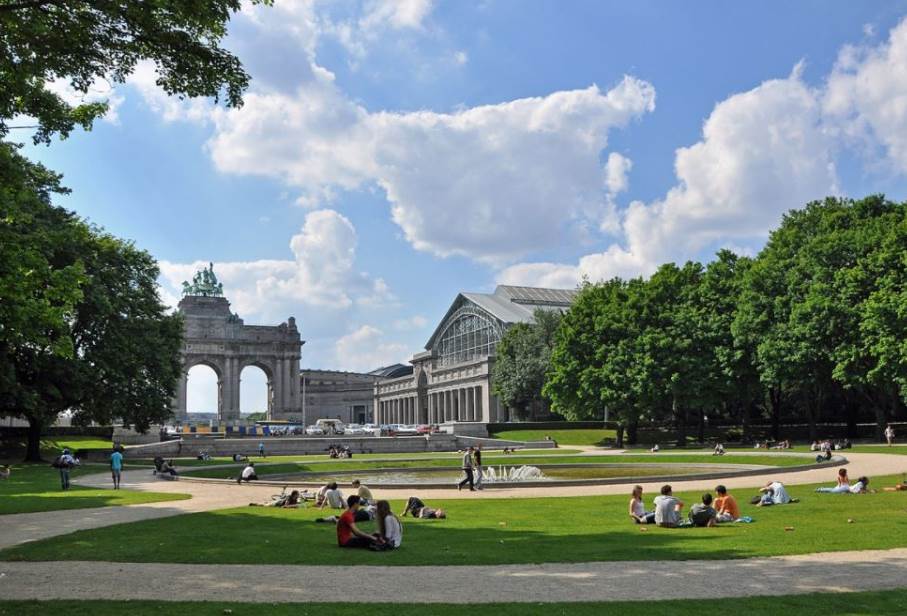
2. It’s part of a much larger monumental complex
The triple arch is the centerpiece of a much larger monumental complex of Beaux-Arts buildings and structures. These include a huge memorial arcade referred to as the “Arcade du Cinquantenaire” and various additional buildings attached to it.
These buildings are now used by 3 different museums:
- Royal Military Museum
- The Art & History Museum
- Autoworld Vintage Car Museum
Other buildings located in the park that makes up the Cinquantenaire grounds are the Temple of Human Passions (1886), designed by famous Art Nouveau artist Victor Horta, and the Great Mosque of Brussels (1978).
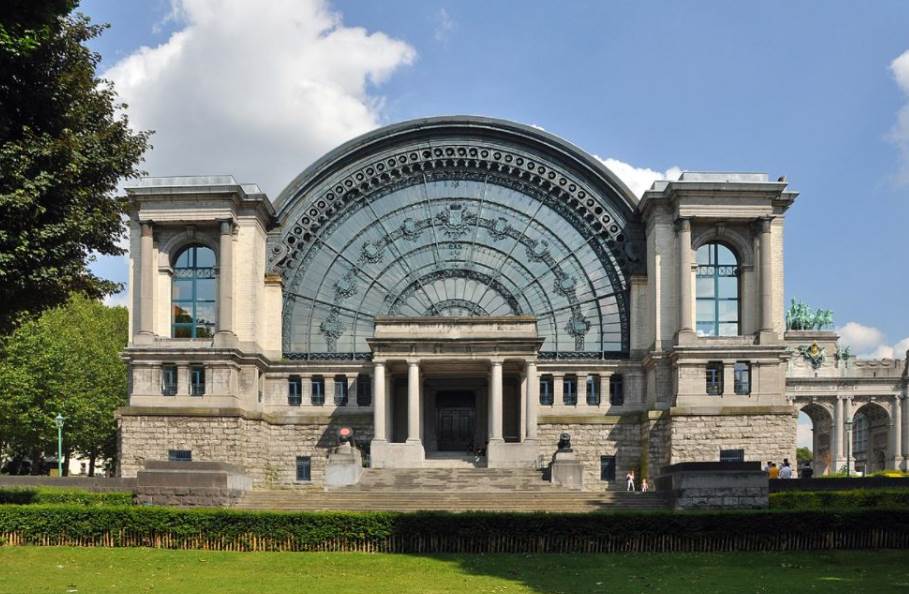
3. It was originally constructed for a particular reason
If you know a little bit of French then you can surely make up that this monument was constructed to celebrate the 50th anniversary of something. This was the 50th anniversary of the Belgian Revolution, an event that happened in 1830 which resulted in the establishment of the independent Kingdom of Belgium.
In simple terms, this can simply be referred to as the split between the Netherlands in the north and Belgium in the south from the previous “United Kingdom of the Netherlands.”
The construction of this monument was paired with the 1880 National Exhibition, the event that was held in Brussels to commemorate the anniversary of the country.
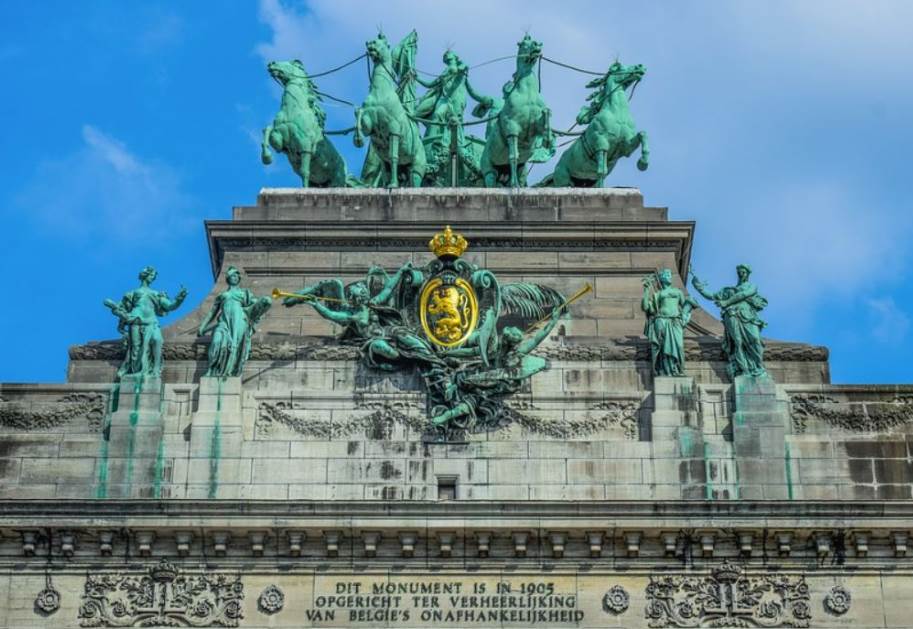
4. It was originally designed by a renowned Belgian architect
The structure was commissioned by King Leopold II and the architect of the structure was named Gédéon Bordiau (1832-1904), a man who left his permanent mark on the city of Brussels with the design of various buildings.
It’s fair to conclude that the man who was educated at the Academy of Fine Arts in Brussels completed his ultimate masterpiece with the structures inside the Cinquantenaire Park.
Apart from completing these monumental structures, something that took him nearly 20 years, he also designed various pavilions for temporary exhibitions held at the park, including the events of 1880, 1888, and 1897.
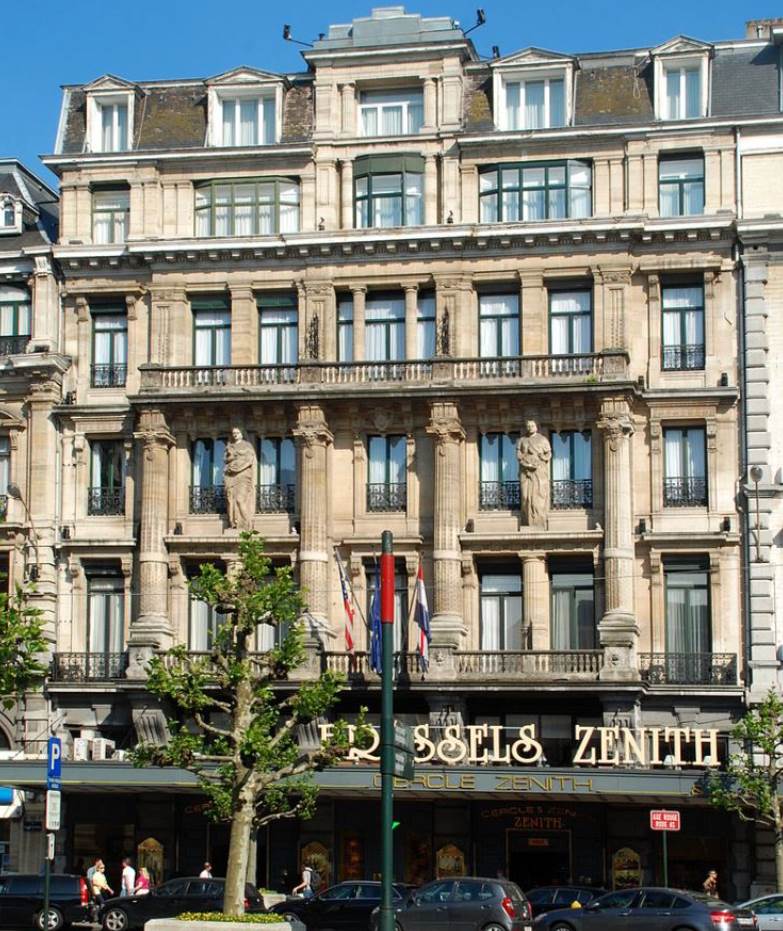
5. The arch was far from completed during the event in 1880
Perhaps one of the most remarkable facts about the Cinquantenaire Arch is that the structure was far from completed when the main event happened in 1880. At this point, only the columns of the arch were completed.
They solved this issue by using wooden panels to represent the remaining parts of the arch, so it pretty much resembles the way it looks today except for the decorations that were added later on.
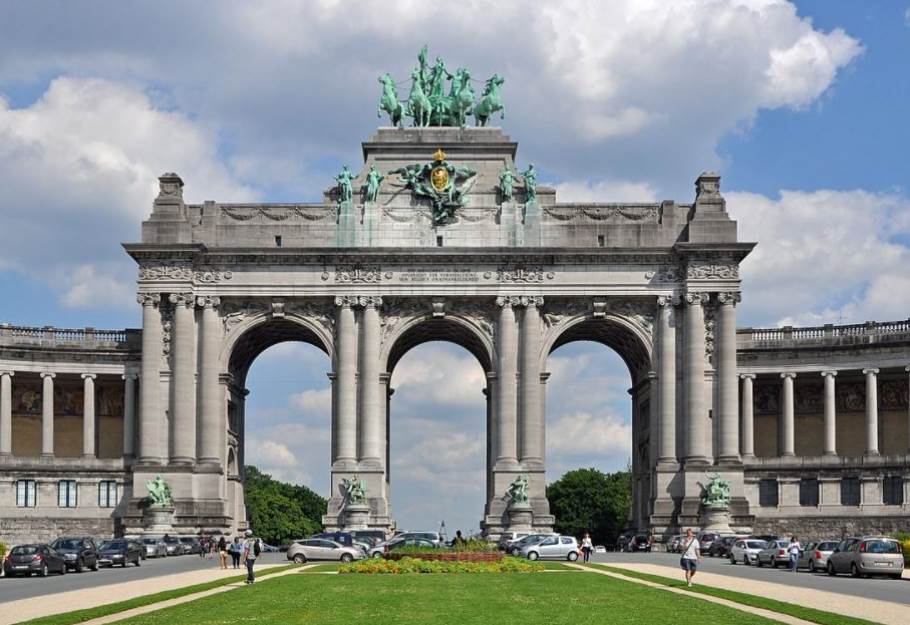
6. The monument was almost not completed in the late 19th century
If it was up to the Belgian Government in the late 19th-century, the arch would most probably never have been completed. The reason was a simple fact that they deemed it way too expensive.
This power struggle remained until the early 20th century when private funds were used to complete the structure. A new architect by the name of Charles Girault was chosen to complete the arch following the death of the original architect in 1904.
The arch was eventually inaugurated by King Leopold II on September 27, 1905, on the 75th anniversary of the Kingdom of Belgium!

7. The triple arch was designed with something particular in mind
French architect Charles Girault made one crucial change to the design of the arch, which was to turn it into a triple arch instead of just a single one.
The main reason was that it was meant to represent an extension of two of the main thoroughfares of the city, the Rue de la Loi/Wetstraat in the direction of the city’s center, and the Avenue de Tervueren/Tervurenlaan in the other direction.
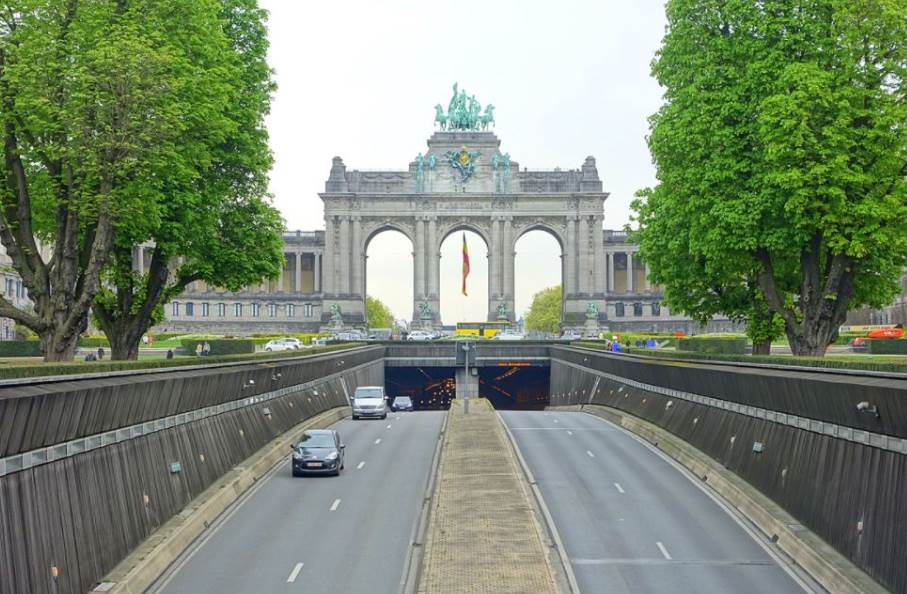
8. How big is the Cinquantenaire Arch?
The Cinquantenaire Arch is an enormous structure and it’s visible from the entire area of the 30 hectares (74 acres) park it’s located in. That’s because the arch has a total height of 45 meters (148 feet) and a width of 30 meters (98 feet).
To give some reference to this number, this is almost as big as one of the most famous arches in the world, the Arc de Triomphe in Paris, which stands 50 meters (164 feet) tall.
The interior ceiling of the arch’s bays is decorated with laurel wreaths on one side and the official pledge of Belgium, “The King, and Law, and Liberty,” on the other.

9. The structure is topped with a huge bronze quadriga
One of the original elements of the arch that was designed by Gédéon Bordiau is the monumental quadriga that tops the structure. This bronze sculpture is titled “Brabant Raising the National Flag” and was a collaboration of two renowned Belgian sculptors.
The main figures sitting inside the quadriga were sculpted by Thomas Vinçotte (1850-1925), and the horses were completed by his colleague Jules Lagae (1862-1931).
The inscription on the arch reads “Dit monument was in 1905 opgericht ter verheerlijking van Belgie’s onafhankelijkheid,” which translates to: “This monument was erected in 1905 for the glorification of the independence of Belgium.”
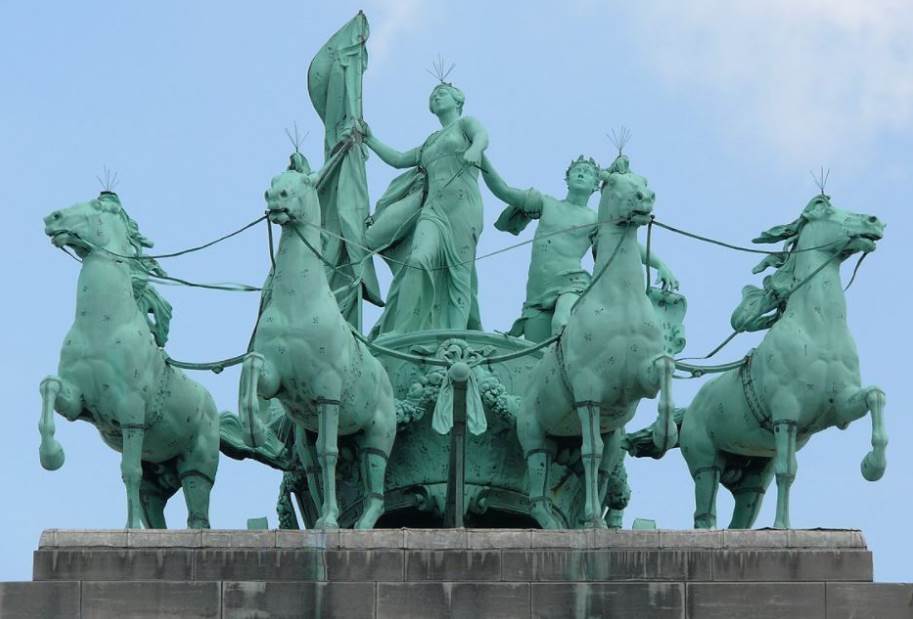
10. The statues on the arch represents the Belgian provinces
The quadriga on top of the monument represents Brabant, which was one of the 9 Belgian provinces that made up the country in the early 20th century. Today, the country consists of 10 provinces because Brabant was split into a Flemish (Durch) and a Walloon (French) part in 1995.
The arch is further decorated with 8 other sculptures that represent the other 8 provinces of the country, which are West Flanders, East Flanders, Antwerp, Limburg, Hainaut, Namur, Liège, and Luxembourg.
These sculptures decorate the lower section of the arch below the columns. There are an additional 12 sculptures located on the spandrels of the arch which represent allegories of Arts and Industry.



